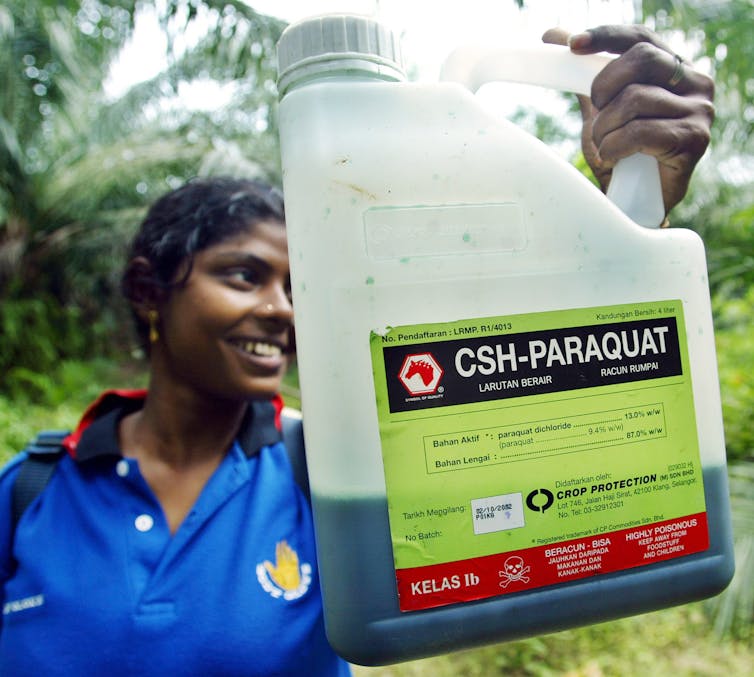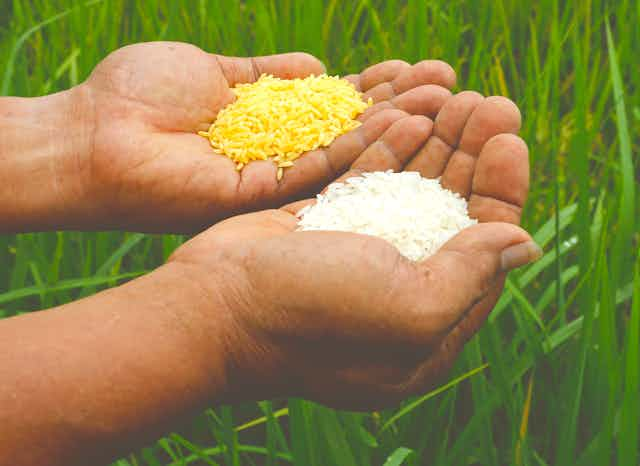I harvested potatoes the other day. Each plant had two to three kilos of potatoes beautifully arranged just under the foliage. But if you believe this is natural, you are mistaken. Like all modern crops, they are genetic variants selected by our ancestors and improved by modern breeders. Breeding always involves changing genes. That this is genetic modification (GM) is generally overlooked. The combination of whole gene families by grafting gets even less attention.
What people usually mean when they talk about GM is specific genetic engineering (GE) of crops. Scientists prefer the term GE because it advertises the real innovation, that they know which genes they introduce and why.
Introduced in the 1990s, GE crops have become much more commercially available. There are currently ten different crops available in the US alone, including corn, soybeans, sugar beet and cotton. Yet ask ten people in the street what they think about GE crops you will find a lot of caution, some rejection, and no support. None of them are likely to have anything against traditional breeding or grafting. Neither will they object to injecting insulin, say, even though it has been purified from a GE micro-organism.

Important mishaps
Efforts to genetically engineer crops, have tended to focus on things like herbicide tolerance and disease and insect resistance. Insect resistance was tackled as far back as the early 1990s by the creation of transgenic crops that produce small amounts of the Bacillus thuringiensis (Bt) toxin. This removed the need to combat insect pests by spraying fields with tonnes of this chemical, which ends up in the soil because it falls next to the plant or is washed off with the next rain. It sounded like a win-win – both better for the environment and more effective.
Herbicide-resistant crops also began appearing in the 1990s. Farmers traditionally controlled weeds using herbicides like paraquat that can only be sprayed before the crop has started growing. These are highly toxic, harming biodiversity and also animals and humans. Scientists engineered crops with built-in resistance to less toxic and more biodegradable herbicides. This has enabled farmers to switch to the likes of Roundup, which kills all weeds and can be sprayed on even once the crop is already growing. Another win-win?
Not quite. Both types of crops are grown in many parts of the world, but they are not embraced by consumers. Hardly anyone seems to know about the drawbacks of spraying Bt toxin or paraquat. Yet the typical criticism that herbicide-resistant crops are just a marketing strategy to promote the use of different herbicides seems to have stuck.

These examples highlight two key failures in the industry. The first is about marketing: from the start, these products have lacked appropriate advertising and consumer information.
The second failure relates to the disproportionate focus on crop protection: trying to improve resistance to things like pests, frost and droughts is both very difficult and will only benefit farmers’ production costs. Only a small proportion of this is passed on to consumers.
Field of dreams
Some true GM jewels have meanwhile failed to make an impact. Take golden rice, a GE rice that contains high levels of vitamin A. It could really make a difference to vitamin A deficiency, which leads to blindness and death in many parts of the developing world. This rice is one of the best examples of genetic engineering, achieving a trait that could take millennia to stumble upon through conventional breeding.
Yet people are not benefiting. Opposition has meant that it has not been licensed anywhere. Golden rice received far better public support compared to insect or herbicide-resistant crops, but by the time it emerged in the late 1990s, GE negativity had taken hold.
More recently scientists have succeeded in dramatically increasing protein content in potatoes and cassava. This is much simpler and cheaper than engineering resistance to insects and the like, and also promises to improve nutrition in many parts of the world. If the first GM crop had been golden rice or a high-protein potato, public perception of the new technology might have been very different.

When I think about the opportunity we have missed with GE foods, I think of Flavr Savr tomatoes. I would have loved to try one: sweet, juicy, beautifully red and yet crunchy, great for a salad with mozzarella, basil and olive oil and a sprinkle of sea salt. If only I could buy them in the supermarket.
But as one of the first GE products to be licensed, it was withdrawn in 1997. Why did it fail? Instead of putting any emphasis on the benefits to the consumer, much of it was turned into tomato puree, marketed as 10% cheaper to manufacture. Would you have been drawn by an advert offering such dazzling features? I guess not.

